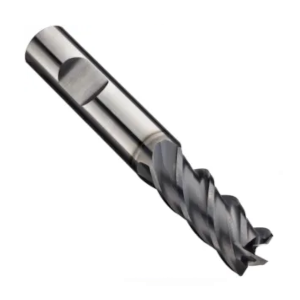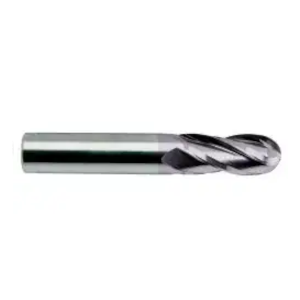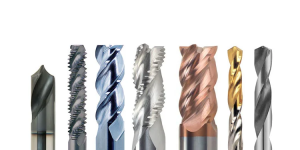Questions? Call Us to speak with a CAD CAM Pro!
Have you ever marveled at the intricate parts and components produced with absolute precision in the manufacturing world? The magic behind such craftsmanship lies in the realm of CNC milling tools. These cutting-edge tools wield the power to carve out a diverse array of shapes, slots, and holes, breathing life into even the most complex designs. As we embark on this enlightening journey to explore the realm of CNC milling tools, we’ll uncover the different types of cutting tools, their materials, coatings, and the essential factors to consider when selecting the perfect tool for your project.
Prepare to unlock the full potential of your projects as we delve into the world of CNC milling tools, discovering their applications and mastering the art of tool selection. From versatile end mills to specialty tools, let’s dive into a world where technology and craftsmanship converge to deliver impeccable results. Let the adventure begin!
Understanding CNC Milling Tools
CNC milling tools are the backbone of machining operations, shaping raw materials with precision and finesse. These cutting tools, employed in the milling process, expertly remove material from fixed workpieces, paving the way for endless possibilities. Familiarizing yourself with the functions of these tools is essential before diving into any machining operation or workshop.
Among the multitude of CNC milling cutters, four main types stand out: end mills, twist drills, face mills, and ball nose mills. Each type serves a unique purpose, offering specific advantages to help you achieve your desired results. Let’s take a closer look at each of these categories.
End Mills
| End Mills |
 |
.
End mills are the Swiss army knives of CNC milling tools, capable of creating holes, slots, and profiles with finesse. These versatile cutting tools come in various types, including bull nose end mills, roughing end mills, V-bit end mills, and flat end mills. The number of flutes on an end mill influences feed rate and cutting speed, making it crucial to select the right tool for your specific needs.
When choosing end mills, factors such as workpiece material, machining operation, and tool geometry should be taken into account. With the perfect end mill in hand, you can strike the ideal balance between performance and precision, ensuring the success of your project.
Twist Drills
| Twist Drills |
 |
.
Twist drills are essential tools for hole-making in machining operations, featuring helical grooves for efficient chip removal. Their pointed tips initiate drilling by creating indentations in workpieces, guiding the drill into materials as cutting edges engage to remove material. Versatile and available in various sizes, twist drills are used for drilling holes in metals, plastics, and wood, both in handheld drills and machine setups.
Face Mills
| Face Mills |
 |
.
Face mills are vital for producing flat surfaces on workpieces, utilizing cutting inserts on the tool face for efficient material removal. With the ability to remove large amounts of material quickly and evenly distribute cutting forces, face mills offer high precision and accuracy. Available in different configurations, including indexable inserts and solid carbide options, face mills are chosen based on material hardness and surface finish requirements.
Ball Nose Mills
| Ball Nose Mills |
 |
.
Ball nose mills specialize in creating complex contours and shapes with smooth transitions, thanks to their hemispherical cutting tips. They excel in producing concave and convex features with excellent surface finish and dimensional accuracy. Versatile and suitable for various applications such as 3D machining and contouring, ball nose mills come in different sizes and configurations to meet diverse machining needs, often featuring specialized coatings for enhanced wear resistance and tool life.
Barrel Mills
| Barrel Mills |
 |
.
Barrel milling cutters, also known as barrels, have transformed finish and semi-finish machining of 3D surfaces in the metalworking industry. Initially limited to specific applications, advancements in machining technology have propelled these tools into the spotlight, revolutionizing complex surface machining. With their ability to reduce machining time and improve tool life, barrel end mills are poised to become indispensable in various industries, from aerospace to medicine.
As the demand for barrel end mills continues to rise, cutting tool manufacturers are investing in advanced designs to meet customer needs effectively. The MULTI-MASTER concept from ISCAR offers a sustainable solution, with exchangeable carbide heads ensuring cost-effective use of materials.
Material Selection for CNC Milling Tools
Selecting the right material for CNC milling tools is crucial for achieving optimal results in machining operations. Various materials, such as carbon steel, high-speed steel (HSS), and carbide, offer different properties and performance characteristics. Carbon steel is economical but not suitable for high-speed operations or cutting hard materials. HSS provides greater hardness, toughness, and durability compared to carbon steel, making it ideal for cutting both ferrous and nonferrous metals. Carbide, on the other hand, offers superior wear resistance and is suitable for high-quality surface finishes in demanding machining applications. Understanding the unique properties of each material helps in choosing the most suitable option based on the specific requirements of the project.
Tool Coatings for Enhanced Performance
| Coating Examples |
 |
.
Tool coatings play a crucial role in enhancing the performance and durability of CNC milling tools. Coatings like titanium nitride (TiN), chromium nitride, aluminum titanium nitride (AlTiN), and diamond-like carbon improve tool properties such as hardness, wear resistance, and thermal stability. TiN coatings extend tool life and reduce adherence to workpieces, while AlTiN coatings offer increased heat resistance and wear resistance, making them suitable for high-temperature operations. Each coating has its unique advantages, and selecting the right one depends on factors such as the type of material being machined, cutting speeds, and environmental conditions. Choosing the appropriate coating can significantly improve tool performance and efficiency in machining operations.
Factors to Consider When Choosing CNC Milling Tools
Several factors must be considered when selecting CNC milling tools to ensure successful machining operations. Workpiece material, machining operation, and tool geometry are critical aspects to evaluate. The tool must be harder than the workpiece material to be effective, and its properties should match the requirements of the machining operation. Factors such as the number of flutes, cutting speed, and feed rate influence tool performance and the quality of the machined surface. By carefully considering these factors, machinists can choose the right tool for each job, optimizing efficiency and achieving desired results.
Conclusion
In conclusion, the world of CNC milling tools is a captivating blend of technology and artistry, offering endless possibilities for precision machining. Armed with the knowledge of different tool types, materials, coatings, and selection factors, you can embark on your machining journey with confidence, achieving impeccable results with every project. Let the adventure begin, and may your milling endeavors be filled with creativity and success!
Questions? Call Us to speak with a CAD CAM Pro!